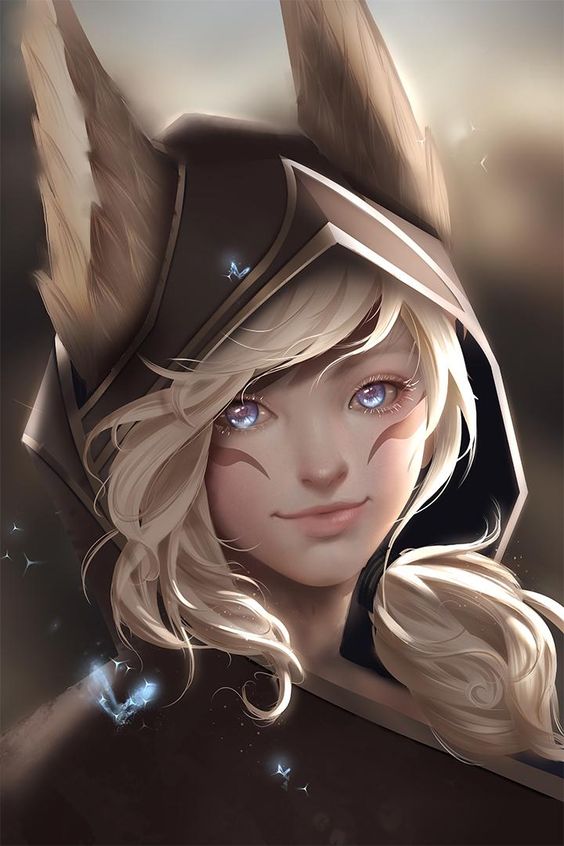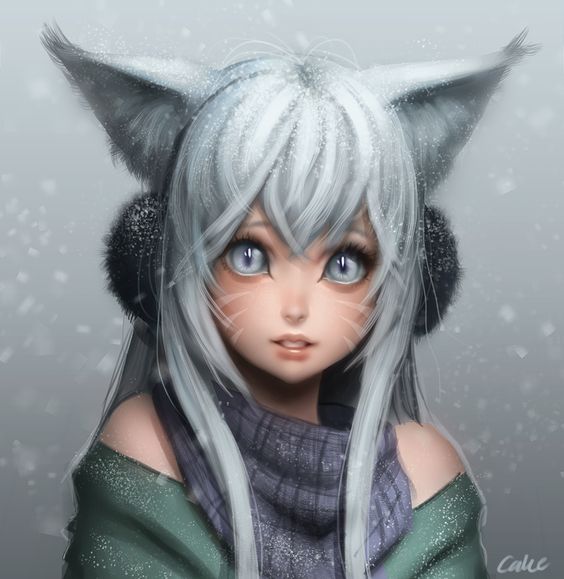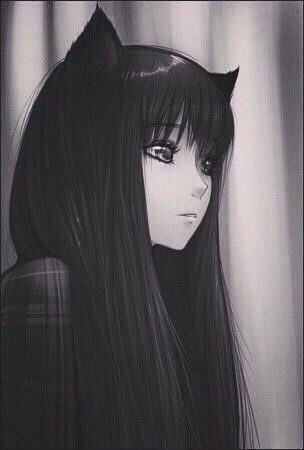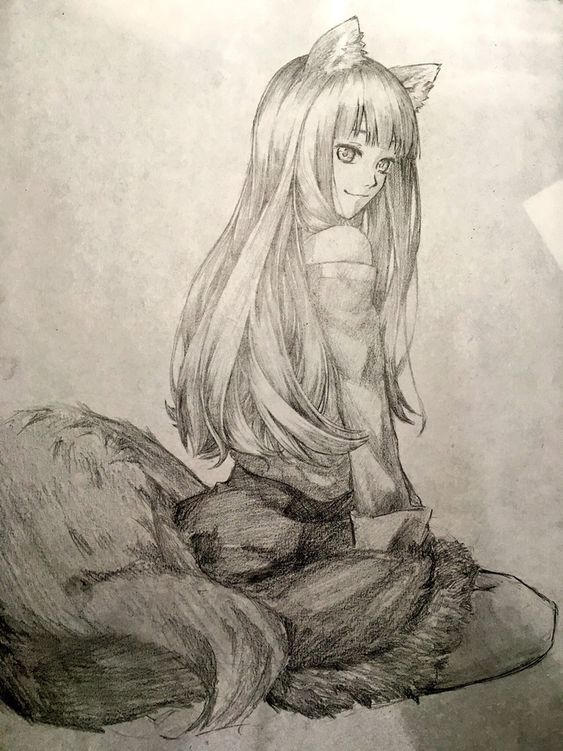Sankine
General
The Sankine is one of the few races that has been allowed to evolve and walk upon the same soil as Humans since time immemorial.
The two races have never truly been on equal footing, however, as time and time again, the Sankine has found itself subservient to the Human Race, even though the latter is not regarded as "mystical" in nature as the former: Sankine are well-known for having an inherent connection with the world around them, being only thwarted by the Olbelohi as can be expected.
In current circumstances, the Sankine are widespread across the whole world, though they are subjugated to Humans in the majority of its population. Only in a few handful locations, both known and unknown, are they considered to be free and unshackled.
Mystical Air
Whenever one meets a Sankine one will instinctively notice that there is something more to them than meets the eye. It will nag one like an itch at the neck, both mentally and in a somewhat literal sense.
Why this is so? Excluding the Olbelohi, the Sankine have the most radiant of auras and a strong connection to the Veil Beyond, more so by far than most of humankind. Only a handful of Sankine are born every generation that is Asume and they are looked down upon even by others of their kin.
Uneasy feeling
"Nya... I have a bad feeling about this ...
The Sankine have an uncanny capability to tell when a situation is wrong or about to take a dangerous turn. This feeling can sometimes manifest to them as a smell, an itch, or a headache. Dry throat, goosebumps, or painful nerves. For others, it is far more ambiguous.
An irritating aspect regarding this sixth sense of theirs is that they can never tell where, when and what in regards to the danger, though some do insist that the uneasy feeling may increase with closer proximity to an event or a location.
Biological Traits
Skin Color
The Sankine can have a wide variety of skin colors, ranging from night-black to silver-white. The most common skin color of theirs, however, is a light tan that is present even if they do not spend much time outdoors, while the least common is a purple-black shade.
In contrast to Humans, the skin color of the Sankine is not dependable on geographic location, so you have just as much plausibility of meeting a dark-skinned Sankine in a northern lumber-village, as you have of seeing a fair-skinned walking along the desert dunes of Otanhet.
Spots
A rare number of the Sankine are marked with about a dozen birthmarks that are similar to the spots of a cheetah; some call them Spots or Sankine Spots, while a few others call them large freckles. These can range from all manner of colors, from simple night-black to an amber-golden shade. The size of the spots also varies: For example, some spots on the leg are the size of coins, while one singular around the eye is the size of an apple.
Freckles
Freckles among the Sankine are not overly common and some, albeit few, simply see them and call them, small spots. There are certain differences though, and one is that freckles have no fantastical color shade; they are either of a dark brown, near black shade, or of a reddish hue. Another difference is that they are only found on the face, or the shoulders, neck, chest, and arms, while Spots can be found anywhere on the body.
Whisk Marked
Some of the Sankine are marked with what is called Whiskers Markings on their face. They begin at the neck and ends at the cheek. They could be somewhat compared to spots, though they will always be of the same shade as the Sankine's hair color. They are also softer than the rest of a Sankine's skin as if they had just been oiled.
It is a relatively uncommon trait and only around thirty percent of the population are Whisk Marked. It is considered to be a sign of luck, as they apparently give Sankine an enhanced sixth sense that is more accurate in terms of time and distance in regards to an unknown danger.
Two Marked
While most Whisk Marked are born with six whisk marks, there sometimes happens that one is born with only two whisk marks.
For some reason, this causes the Sankine's sixth sense to be unbalanced: This causes the Sankine's sixth sense to be unbalanced: It might trigger a spike that can immobilize a person for several minutes, or be so weak it is barely noticeable. There is no in-between. If that was not enough, it appears the weaker occurrences are highly accurate and warns of very lethal outcomes, while in regards to the heavy spikes, nothing of danger appears to happen.
Eyes
"Their eyes. They are like the void, I'll tell you. Once you look into them, well, you will have a hard time looking away ...
The Sankine are known for having large eyes that just draw you in.
A majority of their kin have oval eyes, with almond-shaped ones being the rarest, appearing in one out of a hundred. The ones looked upon with most fondness though, are those with round eyes, which is said to have the easiest time captivating people.
Something that may surprise people if they have never met a Sankine before, on the off-chance that that would be so, is that Sankine can dilate or slit their pupils, and it is either in response to the amount of light around them, or their mental state.
Eye Color and Dark Vision
Sankine are born with one out of seven colors, as well as hundreds of various color shades. These colors are blue, green, brown, amber, amethyst, copper and crimson.
All Sankine are also able to see incredibly well in the dark. Interestingly enough is that those with either amethyst or crimson eye color (or shades thereof) have the best dark vision, though the reason behind this is still unclear.
Ears
One of the most well-known characteristics of the Sankine is their large ears that resemble those of cats or foxes. There are usually some differences between specimens, such as size, form, and fluffiness. Some may also have tufts on the tip of their ears.
And no, they do not have another set of human ears; something that they usually hide with long hair. Additional ways to hide this detail that may unnerve people is with jewelry, headbands, and tattoos. Special earmuffs and knitted caps may also be used.
Hair
Sankine has a nigh-supernaturally fast hair growth that fades away to a near standstill after their locks reach below the shoulders. Their hair is also much thicker and softer than that Humans' and even the Olbelohi, and something about it appears supernatural since the quality of their hair won't be affected by poor care or diet.
In terms of hair color, the Sankine can be born with a wide variety that does not necessarily need to mimic their parents', though these instances are fairly uncommon. Heterochromia Iridium is far more common, at least in some genetic pools. The color of their hair can range from rare blueberry blue or silver-white platinum to the more common rosehip red and night-black.
Fangs
All Sankine that older than about seven years have noticeable fangs on their upper jaw, which are visible when they open their mouths, smile broadly, or grimace. They are not born with them but receive them after losing their milk teeth around the age of five.
The gums will itch during the fangs growth, which is why most parents or caretakers give Sankine children Teething Toys to ease the discomfort.
Their fangs can also come in a different color shade than their other teeth, though this is not common, as only about one in a hundred has miscolored fangs. The shade usually varies between a blueberry blue to a crimson one.
Tails
Sankine all have fluffy and soft tails that are about one meter in length, and some say they are slightly reminiscent of fox and wolf tails. They help the Sankine with balance when they are climbing on high places, as well as allowing them to make sudden turns while running without losing their footing. They, usually Sankine children, may also use their tail as a tool for comfort as they hug it.
The tail fur is of the same color as their hair, though usually a bit more vibrant in shade. Some Sankine have white tail tips, others dark and some have spotted tails. The majority have single-colored tails, however.
Verbal Tics
"Nya ... I have no idea what you arrre talking about...
Sankine have an almost instinctual need to punctuate their sentences with words such as "nya" and "mja." No scientist or scholar worth their salt has ever managed to uncover the reasoning why the Sankine has this tic, but it is as characteristic as them rolling their "r."
Scientific Name
Felinre Sapience
Origin/Ancestry
The Canyon Jungles
Lifespan
70 years.
Average Height
160 centimeters.
Average Weight
65 kilogram.
Sankine Hoods
"I think it is kinda dumb. I mean, aren't hoods supposed to protect your head from the rain and cold? Their ears are completely exposed to the elements!
Sankine Hoods is the umbrella term for all hoods made by and for the Sankine with emphasis on the ears. This means that they have holes in them to allow the ears "to breath." Some types are simply pulled over the head like a normal, human hood, while others are a bit more complicated: known as strap-hoods, they connect straps together around the ears, at the right and left sides, right at the bottom, usually with buttons or string.
Head pats
One gesture that has become both cursed and blessed for the Sankine and seen with either pure disgust or lovable, is the head pat. The act of patting on the head, between the ears and sometimes ruffing their hair a bit.
Simply doing this usually sends a wave of comfortable sensations down the spines of the Sankine, whether they want it or not, though the sensation is notably bigger if it is done by someone whose company they enjoy. One of its primary uses was, and still is, to act as a simple way to reward Sankine Servants for doing their duties well. Some few would consider this pure drug abuse, as the dopamine levels released by the head patting can cause Sankine to become addicted in due time.
Identification Tattoos
"You should know damn well what happens when you do not listen to my orders, 1579!
In some cultures and societies where the Sankine are under serfdom, they will receive specific identification tattoos when they are but children. Usually on one of their shoulders, or at the base of their necks, though on the forehead, as well as on the cheek or arm are just as common. The tattoos are usually in number form due to its bureaucratic effectiveness, but heraldic symbols, along with names are common as well. This has become a more and more old-fashioned and looked-down-upon practice in recent years, however, as some influential individuals have begun to see it as barbaric and demoralizing for their servants.
Collars
Along with identification tattoos, collars too are sometimes used. Most of them come with an identification badge with both name and number carved into it. Some masters have begun to make collars more inconspicuous by essentially making them into simple necklaces where the jewelry is the badge. Others go the other way around and give the collars a tiny bell. In some cultures, these bell collars are only given to Sankine considered properly trained and can work on assignments in city areas without supervision.
Remove these ads. Join the Worldbuilders Guild














Comments